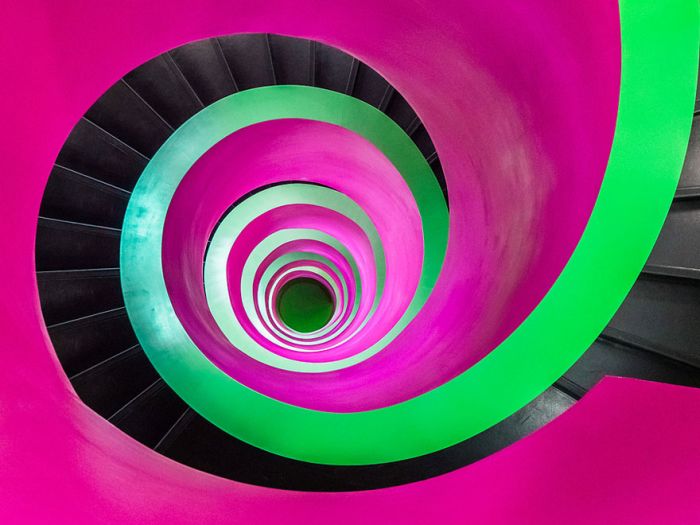|
|
Spiral Staircase Photography
|
The term "spiral" is used incorrectly for a staircase from a mathematical viewpoint, as a mathematical spiral lies in a single plane and moves towards or away from a central point. A spiral staircase by the mathematical definition therefore would be of little use as it would afford no change in elevation. The correct mathematical term for motion where the locus remains at a fixed distance from a fixed line whilst moving in a circular motion about it is "helical". The presence or otherwise of a central pole does not affect the terminology applied to the design of the structure.
Spiral stairs in medieval times were generally made of stone and typically wound in a clockwise direction (from the ascender's point of view), to place attacking swordsmen (who were most often right-handed) at a disadvantage. This asymmetry forces the right-handed swordsman to engage the central pike and degrade his mobility compared with the defender who is facing down the stairs. Extant 14th to 17th century examples of these stairways can be seen at Muchalls Castle, Crathes Castle and Myres Castle in Scotland. Exceptions to the rule exist, however, as may be seen in the accompanying image of the Scala of the Palazzo Contarini del Bovolo, which winds up counter-clockwise.
Developments in manufacturing and design have led to the introduction of kit form spiral stairs. Steps and handrails can be bolted together to form a complete unit. These stairs can be made out of steel, timber, concrete or a combination of materials.
Helical or circular stairs do not have a central pole and there is a handrail on both sides. These have the advantage of a more uniform tread width when compared to the spiral staircase. Such stairs may also be built around an elliptical or oval planform. A double helix is possible, with two independent helical stairs in the same vertical space, allowing one person to ascend and another to descend, without ever meeting if they choose different helices (examples: Château de Chambord, Château de Blois, Crédit Lyonnais headquarters in Paris). Fire escapes, though built with landings and straight runs of stairs, are often functionally double helices, with two separate stairs intertwined and occupying the same floor space. This is often in support of legal requirements to have two separate fire escapes.
|
|









